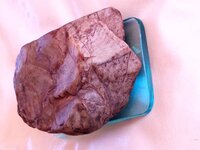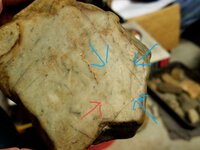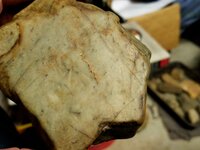Salvatore
Jr. Member
Found in the north east of Connecticut and believe it to be soapstone but not exactly positive it is. Very dence in weight and color is like greenish beige. The size is around 5"x 5" wide.The crystal growth looks to be like squares combined together.














